If you synthesize organic compounds you likely have encountered situations where traditional silica or even reversed-phase chromatography just does not get the job done. Co-elution, peak tailing, yield losses, etc. are all issues that make us need to find a more efficient purification strategy. Adding acids, bases, or buffers to solvent systems sometimes resolves the issues but adds more complexity and challenges to post purification compound isolation as the salts often need removal.
A frequently overlooked but often successful option is to use a column packed with amine-bonded silica. This media typically has a propylamine moiety bonded either covalently or ionically to the silica surface, Figure 1.
 Figure 1. Propylamine bonded silica
Figure 1. Propylamine bonded silica
The amine functionality provides a more alkaline environment to interact with the reaction mixture’s components making this media type ideal for organic base purification such as with the purification of tricyclic amines, Figure 2. The alkaline environment essentially eliminates the need for the addition of a competing amine modifier such as ammonia in the mobile phase and allows use of less hazardous solvents such as heptane with ethyl acetate instead of dichloromethane with methanol.
 Figure 2. Tricyclic amine mixture purified KP-NH with a hexane/ethyl acetate gradient
Figure 2. Tricyclic amine mixture purified KP-NH with a hexane/ethyl acetate gradient
But the benefits achievable with amine columns do not end with organic base purification. Because the surface chemistry is very different from silica and C18, it can impact separation selectivity of neutral compounds as well by either attracting or repelling various solute functionalities.
For example, I used a silica column (Biotage® Sfär HC) and an amine column (Biotage® Sfär KP-amine) to purify the product of an isatoic anhydride + aniline + benzaldehyde reaction mixture. Products of this type of reaction are often purified using silica and hexane/ethyl acetate gradients as the product and most by-products are neutral, Figure 3.
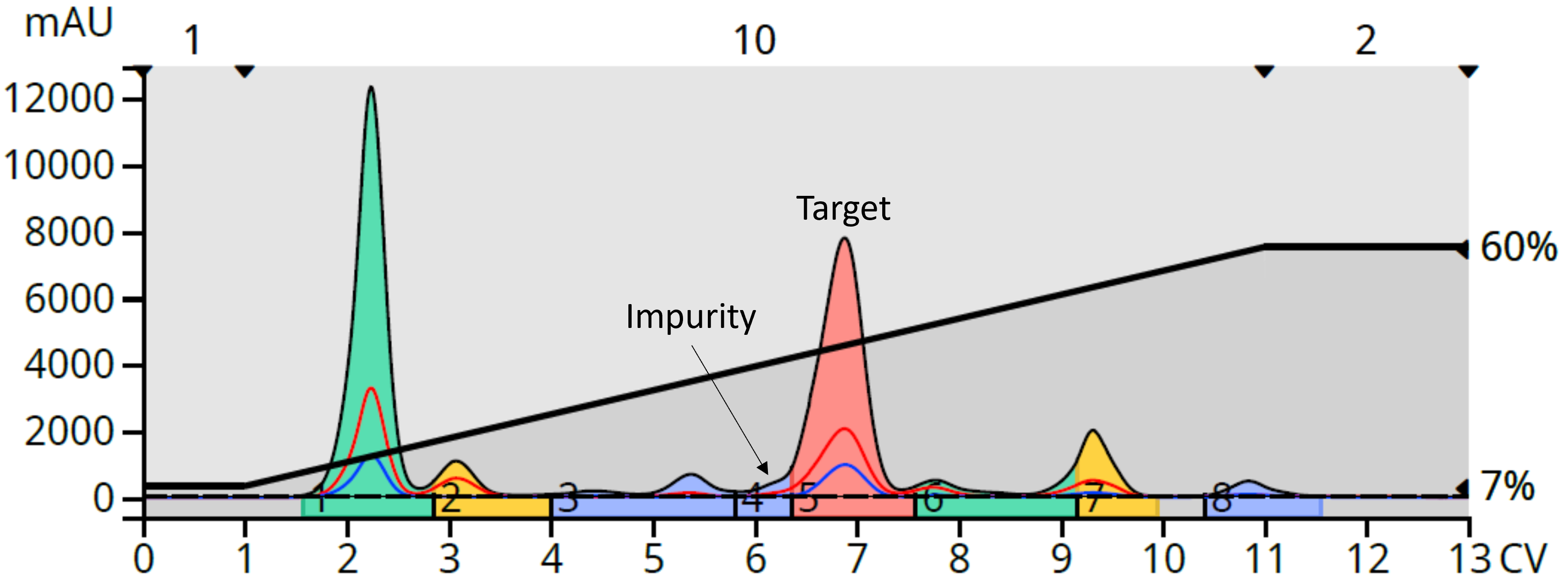 Figure 3. Reaction mixture purification using a silica column did not fully separate a small impurity (arrow) from the product using a heptane/ethyl acetate gradient.
Figure 3. Reaction mixture purification using a silica column did not fully separate a small impurity (arrow) from the product using a heptane/ethyl acetate gradient.
On the surface, this looks like a very successful separation with the product well resolved form the major impurities. However, a closer examination of the product peak’s UV spectrum shows the presence of an impurity eluting on the product peak’s leading edge, Figure 4.
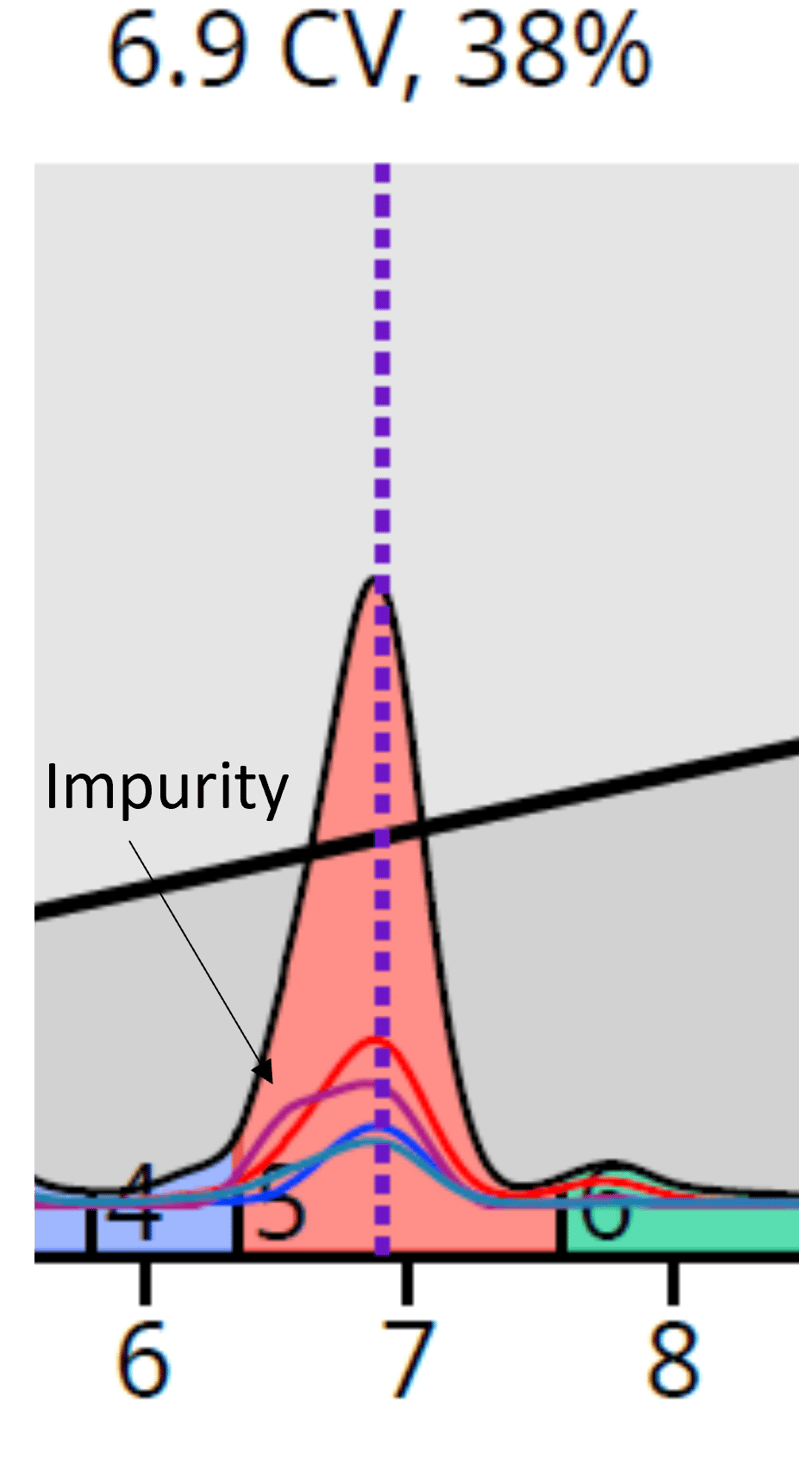 Figure 4. UV spectral analysis of the product peak isolated from a silica column showed the presence of an impurity with a different spectrum.
Figure 4. UV spectral analysis of the product peak isolated from a silica column showed the presence of an impurity with a different spectrum.
While an evaluation of other solvents may have eventually provided a better separation, I found it easier to change the column media and use the same solvents to see if the chromatography improved. In this case I swapped the silica column for the amine column and ran the same 7-60% EtOAc in heptane gradient, Figure 5.
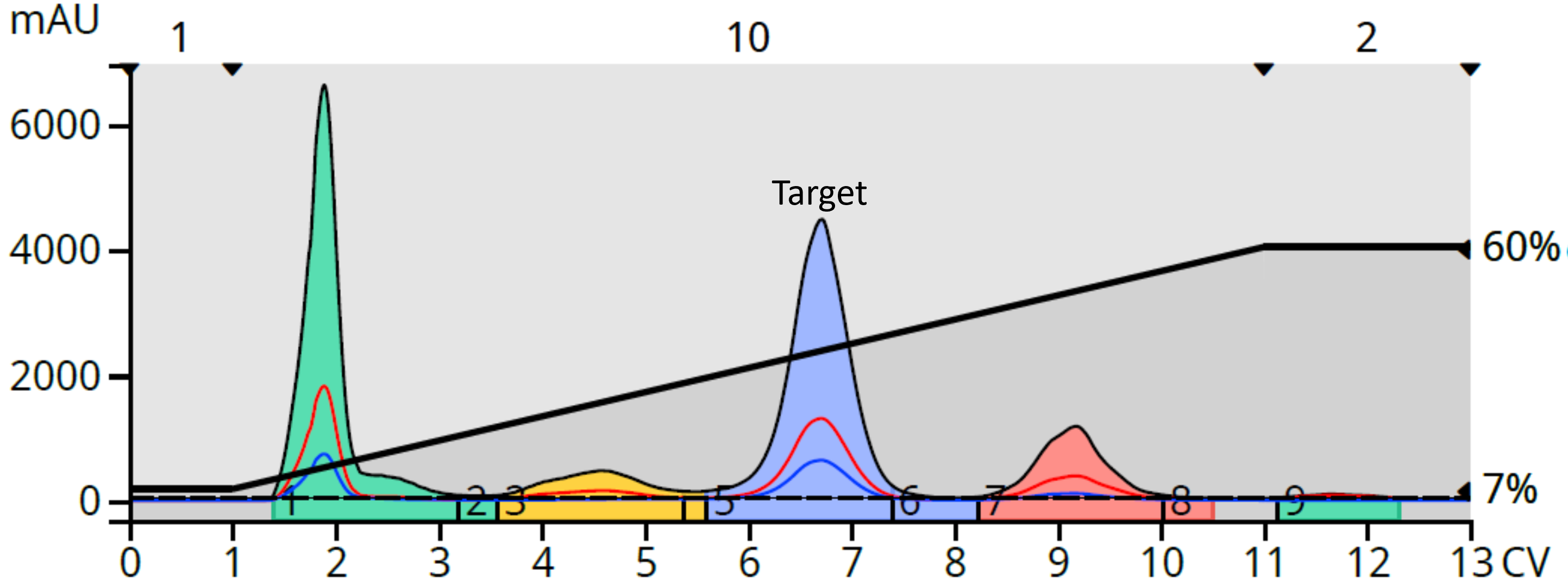 Figure 5. Reaction mixture purification using a Biotage® KP-amine column provided a more complete separation of the product from all impurities.
Figure 5. Reaction mixture purification using a Biotage® KP-amine column provided a more complete separation of the product from all impurities.
While the chromatography looks similar to the silica column’s purification, analysis of the product peak showed the impurity was been removed yielding a higher purity product, Figure 6.
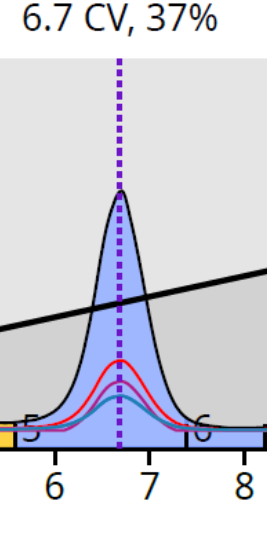 Figure 6. Spectral analysis of the product peak separated using the amine column indicated the product peak is pure.
Figure 6. Spectral analysis of the product peak separated using the amine column indicated the product peak is pure.
The impurity’s removal was verified by reversed phase flash chromatography. The product peak from the silica and NH purifications were injected into a reversed-phase column which showed the presence of an impurity on the back for the silica column’s product peak which is not present when the NH purified product was tested, Figure 7.
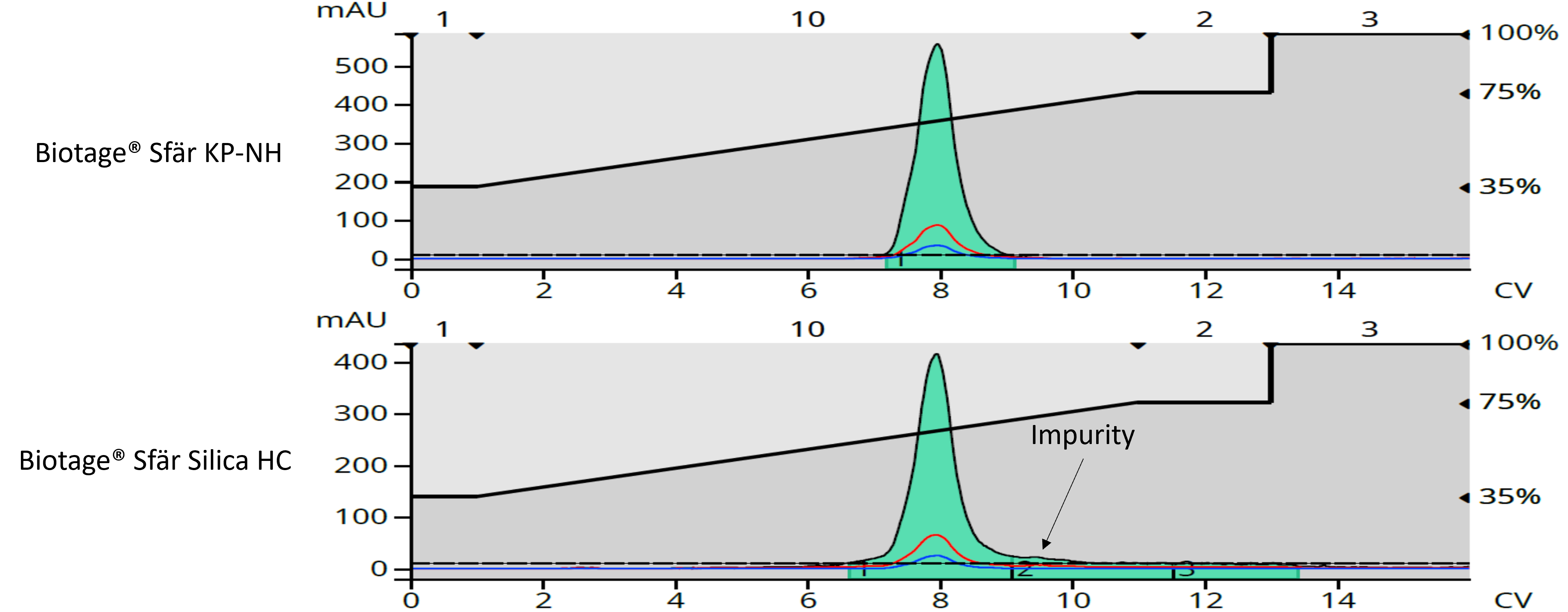 Figure 7. Reversed phase analysis of the collected product peaks. The product isolated from the amine column (top) does not show the presence of the impurity seen with the silica column purified compound (bottom).
Figure 7. Reversed phase analysis of the collected product peaks. The product isolated from the amine column (top) does not show the presence of the impurity seen with the silica column purified compound (bottom).
So, if synthetic product purity is important to you, you may want to evaluate an amine-bonded silica column for your next purification. The results might just surprise you.

